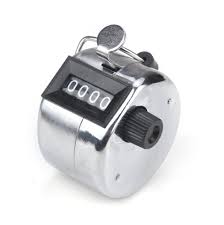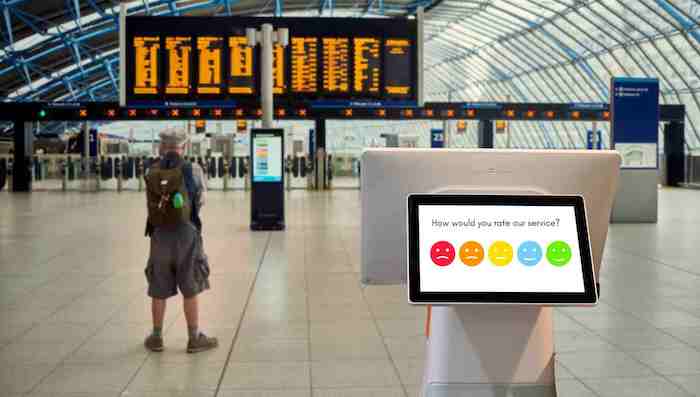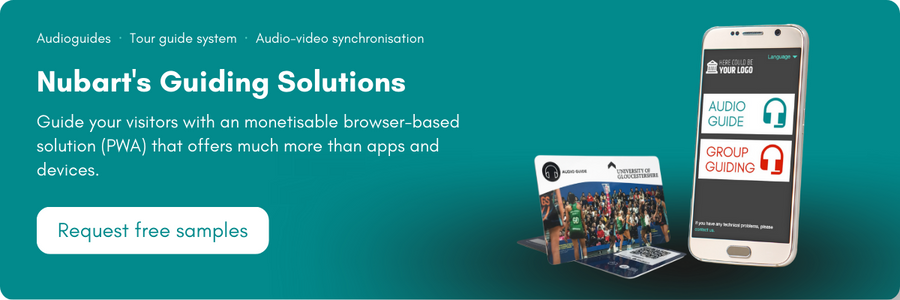People often discuss how difficult it is to interpret data. But, the other, perhaps bigger struggle, is obtaining data in the first place.
Have you ever wondered why the flight attendant who welcomes you onto the airplane sometimes keeps one hand behind her back? It’s not only a polite gesture. The flight attendant isn’t just greeting you, she’s also counting you. In her hidden hand, she’s holding a passenger counter like this one:

As you can see, even with the cutting edge technology airplanes have today, getting a simple passenger count requires yet another creative device.
The same is true for museums (as well as galleries, fairs, parks, open-air tours or other attractions). Before you can win relevant insights into your audience and develop a strategy around them, you need to find a discrete tool to obtain the data.
The struggle to get visitor data
In a museum, the easiest data to obtain is probably the number of visitors, but anything else becomes complicated. When selling the tickets at the reception desk, many museums ask their visitors where they’re from or which is their zip code. But this may not only be an annoyance to visitors, it also adds a complication for the reception staff. The person at the counter, in addition to giving change or explaining some basic infomration, must also take down the data. What seemed simple at first can easily become complicated during peak hours.
But, what’s worse, this method doesn’t capture some of the most important data for a museum director: Where are my visitors coming from? How long do they stay in the museum? How did they like the exhibits? What displays did they find most interesting?
Nubart as a tool for capturing visitor data
Where airlines disguise their effort to collect data as a “welcome greeting”, Nubart offers an audio guide.
Indeed, Nubart’s audio guides serve as valuable mechanism for collecting important data for your museum. Following our metaphor, Nubart would be here your flight attendant. But Nubart achieves this automatically, without distracting your staff or bothering your visitor.
To access the multilingual and multimedia content of Nubart’s audio guides, the visitor uses their own smartphone (“bring your own device”, aka BYOD). This way, our system can capture very valuable data anonymously, complying with GDPR and all Data Protection laws. There’s no way we can reach the identity, numbers or accounts of the user through our audio guides. We can, however, find out the country of origin of the visitor and their preferred language, which are fundamentally important when focusing the marketing of the museum. Today, some traditional audio guides (devices) also allow museums to capture usage-data, but they can’t determine the country of origin: that information can only be obtained by asking the visitor directly or, of course, by capturing that information automatically through their smartphone like we do at Nubart.
Our statistical reports also include behavioral data that require complex algorithms. For example: we track the total duration of audio use for each user or visit and the approximate amount of time visitors spend in the facilities.
See Nubart’s data dashboard in action:
Finally, we offer a list of the most played tracks and their respective percentages, offering surprising insights into the displays that really interest your visitors. Because the visitor’s time in the museum is limited, normally people just click on the audio files of the exhibits that interest them the most. We know by experience that this dataset doesn’t always coincide with what the curator of an exhibition wants or expects. Once this information has been gained, the museum can decide to strengthen or expand upon the public’s favorite exhibits, attracting more visitors, or to look for new ways to attract the audience’s interest to exhibits that may deserve more attention in the curator’s opinion.
How to find out what visitors think of your museum
We can also capture data in one of the most relevant moments of a museum tour, is the end of the visit. At this time, your visitors have their experience fresh in their memory, and an emotion of either enthusiasm or disappointment associated with it.
This would be the ideal moment for the museum to discover what aspects could be improved upon. But, how can this be done? The usual methods are unsatisfactory:
-
Personal surveys: Whether through an expensive agency or with the help of their own staff, some museums place someone with a notepad at the exit to interview the outgoing visitors. But at this point they have spent several hours on their feet and are tired and impatient. And then: most visitors will not like to express an unbiased criticism in the presence of the museum’s commissioner.
-
Feedback terminals: The automated variant of the former procedure are feedback terminals, as they are often found in airports and other public places. Some have a keyboard that allows to provide complex answers to several questions. Others show only three emoticons that the visitor is supposed to tap almost in passing: “I like”, “neutral” and “I don’t like”. A tired visitor will not want to get involved with the first variant. And the second is far too simple to convey really relevant information.

These terminals are also expensive and generate recurring costs (about 200 USD per unit and month).
The brief feedback survey at the end of Nubart audio guides solves this problem. Visitors find it at the end of the digital content, at a moment when they’ve also reached the end of the visit. We do not direct them to an external site, and we do that on purpose: The anonymous survey shall be visible and available to them in its intended brevity. The visitor can answer in a few seconds directly at the museum or on the way back to the hotel. All this probably explains our uncommonly high response rate of around 10% of audio guide users! The best part of all: the museum can receive these comments via email in real time, allowing its staff to take the pulse of the exhibitions all the time.
If the museum would like to ask the visitor’s age, gender or other data that cannot be retrieved automatically, this is the opportunity to do it! The museum can personalize the questions on our feedback survey to meet their own unique needs. You can view and rate these responses at any time via your password-protected customer area.
The quality of your data is equally important
Since the Nubart cards are provided with a unique, identifiable code and are handed out to the visitors on site, the quality and informative value of the data is very high. The unique, non-transferable codes mean that the link to the audio guide cannot be distributed on social networks or a website. This means that the data from visitors who have actually visited the museum cannot be mixed with data or statements from curious outsiders. They all belong to real visitors.
Nubart offers this high-quality data dashboard free of charge to all customers.
Maybe in the specific case of your museum, an audio guide is not so important, but running a visitor-oriented museum that responds to the wants and needs of your audience is. If that’s the case, do as the airlines do and greet them with a Nubart audio guide card right at the front desk!



